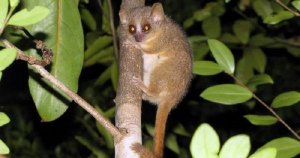
Three New Tiny Mouse Lemur Species Found In Madagascar
Scientists have discovered three new primate species of mouse lemurs in Madagascar. These new species are tiny nocturnal primates with huge eyes, living in the South and East of the island nation.
At less than 27 centimeters head to tail, Microcebus, the mouse lemur, is the smallest primate in the world. The body weight of tiny omnivores actually varies, as the animals store fat in their hind legs and tails for leaner times. They live high up in trees exclusively on the island of Madagascar. Just 20 years ago, only two species were known to exist. Now, with the recent findings, that number has jumped to 24 species in total.

The reason for why these various species have gone unnoticed for so long is simple: mouse lemurs look similar. Because they’re nocturnal, they’re also elusive, and they can only be distinguished reliably with genetic methods.
“By using new, objective methods to assess genetic differences between individuals, we were able to find independent evidence that these three mouse lemurs represent new species,” said Peter Kappeler, Head of the Behavioral Ecology and Sociobiology Unit at the German Primate Center and one of the researchers behind the study. “The genetic techniques we used could facilitate species identification, thus also contribute to further new descriptions in other animal groups.”
Lemur, by the way, is Latin for ghost or shadow – a fitting name for an animal only active at night. Mouse lemurs sleep during the day and spend the night searching for and feeding on insects, flowers, leaves and fruit.
The smallest of the already small mouse lemur is Madame Berthe’s mouse lemur. Discovered in 2000, the creature weighs no more than 30 grams – the equivalent of 13 penny coins. The most widespread and adaptable are the gray mouse lemur.
The new study shows that mouse lemurs are more diverse than expected, and indicates that more species will be uncovered using genetic techniques. The study was recently published in the journal Molecular Ecology.